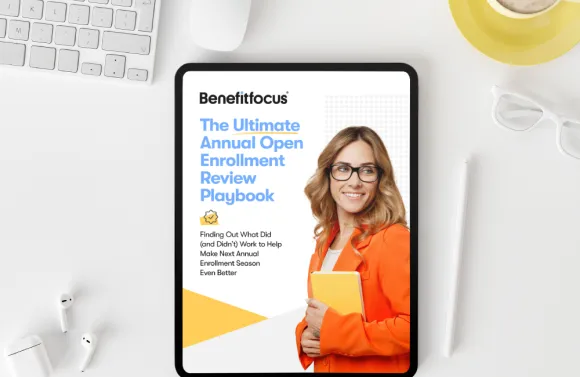
Open Enrollment (OE) has to go well, right? As a Human Resources (HR) professional, you’ve planned for everything, and you’re going into it with a positive mindset. But the truth is, as prepared as you can be both in your physical environment and mentally, not everything is within your and your team’s control. Sometimes, a wrench may get thrown at the best-laid plans. During those moments, we offer these tips on how you can survive.
Scenario 1: The Senior Leadership Request
It’s likely HR leaders have been in this position before. It’s OE season, and your senior leadership team is asking or expecting you to deliver metrics you either aren’t set up to collect or are on a timeline that isn’t possible. You feel like you can’t refuse their request, but it also feels impossible.
Survival Strategies:
- Ask your broker: Your broker partners are there to help you in times like these, and calling in for reinforcements may help lessen some stress and pressure so you don’t have to go it alone. Leaning on a broker partner can help you manage and communicate expectations clearly to senior leadership. Here, they may be able to help you provide a broader overview of employer metrics while giving you time to gather those pertinent to your own company after OE is done.
- Connect with your vendor: A benefits administration vendor can be another great resource to gather data for senior leadership. Some organizations may find it helpful to enlist the support of their solutions provider and broker to fulfill certain requests.
Scenario 2: The Short-Staffed Team
Fall juxtaposes cooler temps with that cozy, warm feeling of just thinking about falling leaves and sweet treats. But it may not be all orange hues and pumpkin spice lattes. As one example, OE season likely coincides with flu season, meaning HR teams can suddenly and unfortunately find themselves in a situation where they’re down a person they can’t afford to miss. What’s an HR team to do, especially when they may be a smaller team?
Survival Strategies:
- Implement cross-training: Some ways to survive going “viral” can happen before and during an event like this. For example, if you work in moments of cross-training throughout the year, it won’t be so painful when a team member gets hit with a bug.
- Outsource or automate OE tasks: Of course, HR teams are moving fast throughout the year so cross-training may not always be the most practical. In that case, look for areas for outsourcing or automation of time-consuming tasks like enrollment verification, data entry and reporting. That way, when it’s time for OE, your time is spent on other necessary and important aspects, especially when pulling double duty.
- Obtain vendor support: Finally, remember to lean on all the support levels available through your benefits administration provider. It could be as simple as asking for more help from your client success team to help execute OE or using their contact center to answer employee benefits questions.
Scenario 3: The Frustrated Workforce
OE season is when everyone’s tensions are running high, including employees’. There’s pressure to make sure they select the optimal benefits for themselves and their families. Yet, they may not understand the options before them and selecting benefits with a time limit can cause a pressure cooker of emotions to erupt. You may find frustrated employees at your door or on the phone in the last few days of OE. How can HR and benefits teams de-escalate these moments?
Survival Strategies:
- Practice conflict resolution: HR professionals are experienced in conflict resolution, so you know how to manage emotional situations when they arise, using techniques like active listening, showing empathy, keeping a calm demeanor and brainstorming solutions.
- Provide opportunities to connect: You can also make it easier on yourself so (hopefully) you experience fewer of these moments. Create opportunities for employees to connect 1:1 with benefits educators or other outside resources. For example, ask a vendor partner like your life insurance provider to come onsite for a day or offer 15-minute virtual meetings to help employees work through coverage scenarios. It’s a win-win. You get some time back in your day, and employees can get their questions answered before the eleventh hour.
- Use standby communications: In some cases, employee escalations occur because of unexpected changes to your benefits program. If you have a new tool, health plan or benefit offering and employees are confused, make sure you have additional communications ready to go to help explain what’s new and how they could benefit from it.
3 Best Practices for OE Monitoring
Monitoring your OE strategy can be an effective way to lessen the impact of many unexpected scenarios. Even when OE is already in full swing, you and your team can implement a few best practices, such as:
- Scheduling periodic check-ins: Set time on your calendar to check in regularly with your OE stakeholders, such as finance, IT and your benefits administration partners. These check-ins can help you proactively identify and mitigate any issues, while also keeping you informed of tasks that are on track or behind schedule.
- Keeping ongoing documentation: Don’t wait until OE season is complete before you document your successes, challenges and unexpected scenarios. For example, consider keeping a log of FAQs that your team receives during OE. Maybe these are brand new questions that reveal a gap in communication or it’s a common question that you receive every year. Documenting this data in real-time can help drive OE preparation for the following season, such as rewriting your employee benefits FAQs.
- Running weekly reports: In addition to daily monitoring of tasks and larger milestones, a weekly report can be a helpful tool to see deeper OE trends and discover opportunities for targeted messaging. These OE trends could include low enrollment among certain groups or higher-than-usual enrollment in a specific plan that might not be the optimal choice for those employees. For example, employees might elect a high-deductible health plan (HDHP) but not select to contribute to a health savings account (HSA). In this case, employers may choose to deliver targeted messaging about the value of HSAs.
Surviving open enrollment requires thorough planning, continuous monitoring and adaptability to changing scenarios. However, it’s important to consider everything that comes after OE, such as measuring your successes, optimizing your benefits strategy and keeping your employees engaged year-round. Partnering with an end-to-end benefits administration provider can help alleviate some of these challenges your team faces before, during and after OE.
To learn more about evaluating OE success and engaging with your employees, download our playbook.
Open Enrollment Survey Playbook.pdf
The information provided does not, and is not intended to, constitute legal advice; instead, all information and content herein is provided for general informational purposes only and may not constitute the most up-to-date legal or other information. Benefitfocus does not act in a fiduciary capacity in providing products or services; any such fiduciary capacity is explicitly disclaimed.
CN4765534_0827


